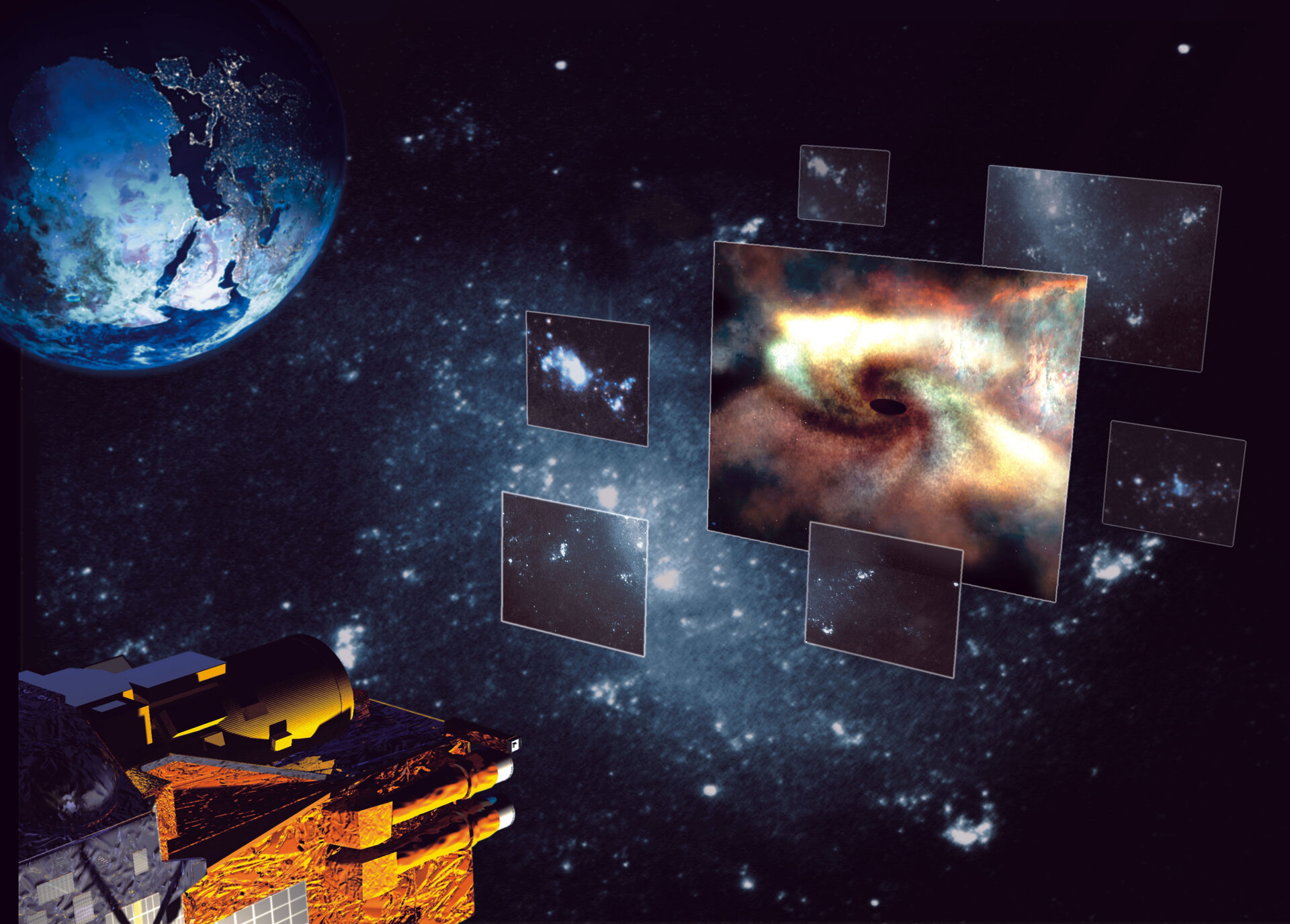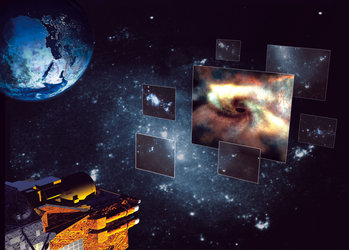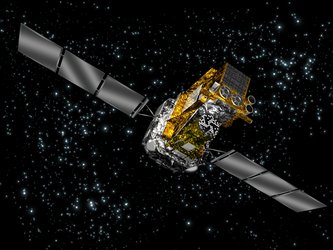ESA presents Integral's first images
ESA PR 79-2002. Integral, the European Space Agency’s gamma-ray satellite, has taken its first images and collected its first scientific data. These 'first-light' images confirm that Integral is working superbly. Everyone involved with the project is delighted with its performance so far.
Professor David Southwood (ESA Director of Science), Dr Arvind Parmar (Integral's Acting Project Scientist), and the Principal Investigators will be presenting Integral’s first ground-breaking images and results at a press conference on 18 December at ESA Headquarters in Paris, France.
Since its launch on 17 October, scientists have manoeuvred Integral into its operational orbit, thoroughly tested their communications link, and verified the spacecraft's response to their commands. They have also been fine-tuning the instruments by observing the famous black hole, Cygnus X-1. "We have beautiful gamma-ray images and spectra of the sky to show," says Arvind Parmar. Astronomers use spectra to analyse the energy of the radiation that they observe.
Integral's results promise to be very special because it has already captured one of the most elusive events in the cosmos – a gamma-ray burst. Gamma-ray bursts are titanic explosions of varying duration that occur about twice daily. Scientists think that collapsing stars in the very distant Universe cause these mysterious, tremendous explosions. The fascinating and thought-provoking results from this observation will be presented at the press conference.
Media representatives wishing to attend are kindly requested to complete the attached accreditation form and return it, preferably by fax, to the ESA Media Relations Service in Paris.















 Germany
Germany
 Austria
Austria
 Belgium
Belgium
 Denmark
Denmark
 Spain
Spain
 Estonia
Estonia
 Finland
Finland
 France
France
 Greece
Greece
 Hungary
Hungary
 Ireland
Ireland
 Italy
Italy
 Luxembourg
Luxembourg
 Norway
Norway
 The Netherlands
The Netherlands
 Poland
Poland
 Portugal
Portugal
 Czechia
Czechia
 Romania
Romania
 United Kingdom
United Kingdom
 Slovenia
Slovenia
 Sweden
Sweden
 Switzerland
Switzerland
































